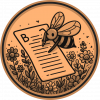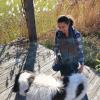Groups joined
Discussion Comments
Resources added
Christos Astaras added a new Article - "Use of passive acoustic monitoring methods to estimate poaching pressure of European turtle doves in Greece (Ionian Islands)" to Acoustics
Groups
Group
- Latest Resource
- /
- Underwater advertisement call of the threatened Telmatobius rubigo (Anura: Telmatobiidae
In a recent publication we tested Underwater Passive Acoustic Monitoring (UPAM) as a feasible non-invasive technique to study the calling behavior of therathened aquatic Andean frogs under natural conditions in the extreme environments of PUNA in the central Andes of Argentina
Group
- Latest Resource
- /
- Underwater advertisement call of the threatened Telmatobius rubigo (Anura: Telmatobiidae
In a recent publication we tested Underwater Passive Acoustic Monitoring (UPAM) as a feasible non-invasive technique to study the calling behavior of therathened aquatic Andean frogs under natural conditions in the extreme environments of PUNA in the central Andes of Argentina
Group
- Latest Resource
- /
- Module 8: In the Field
Welcome to the eighth and final module of our Build Your Own Data Logger virtual course. We’ve built, coded and tested our data logger. Now we’re taking it into the field.
Group
- Latest Discussion
- Species ID Needs?
- Latest Resource
- /
- Here's what you missed at World Wildlife Day 2024
Catch up on the conservation tech discussions and events that happened during World Wildlife Day 2024!
Group
- Latest Discussion
- Autonomizing Small Mammal Traps
Collections
Keep track of the resources that matter to you! Collections let you save, organise, and share content from all over the WILDLABS community. Create your first collection by clicking on the bookmark icon wherever you see it.
Settings
Christos Astaras's Content
In this study, we used a network of acoustic sensors to record the gun hunting pressure at known hunting sites in the Ionian Islands, Greece—a known poaching hot-spot—over four spring migrations (2019–2022).
24 February 2023







































Christos Astaras commented on "Owl call detection software"